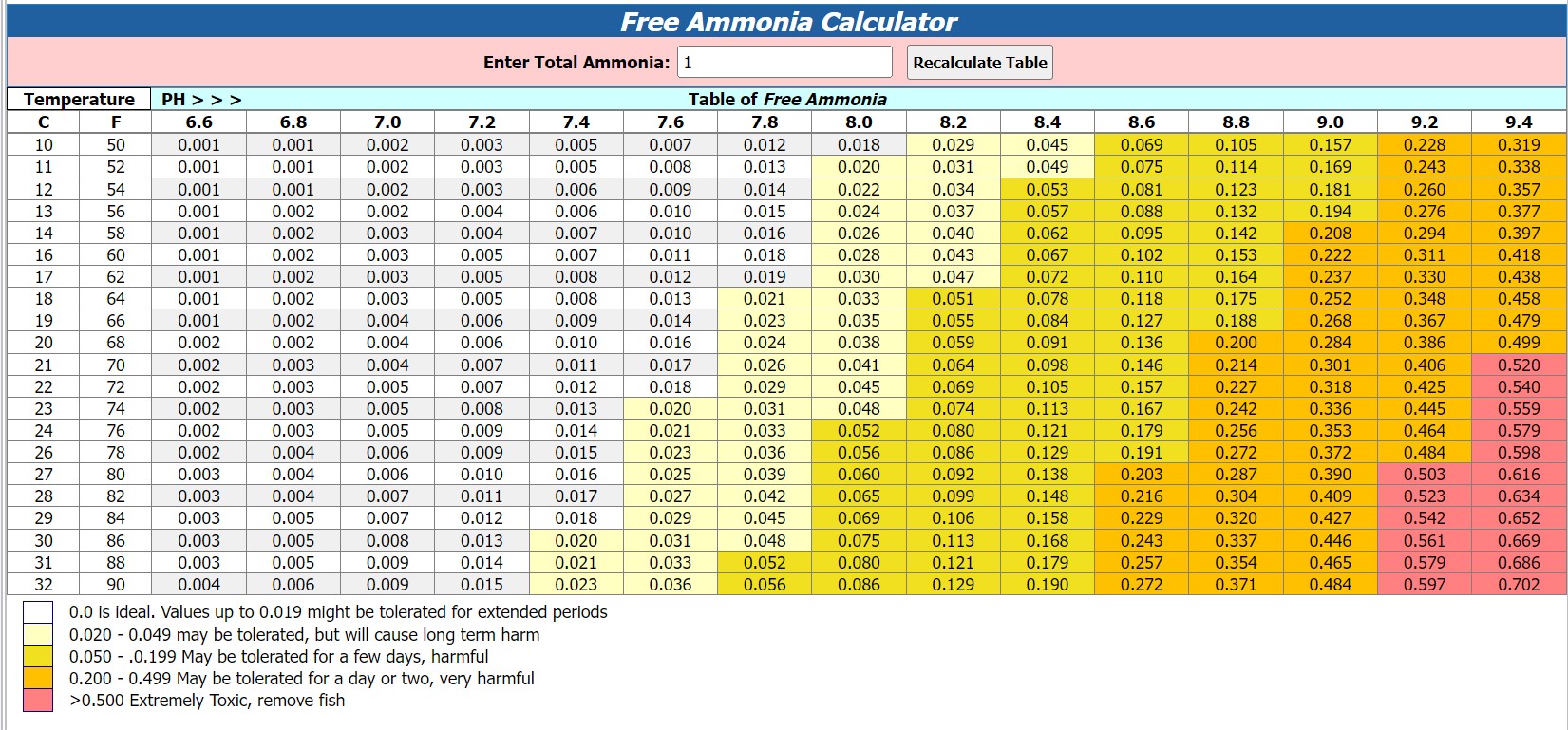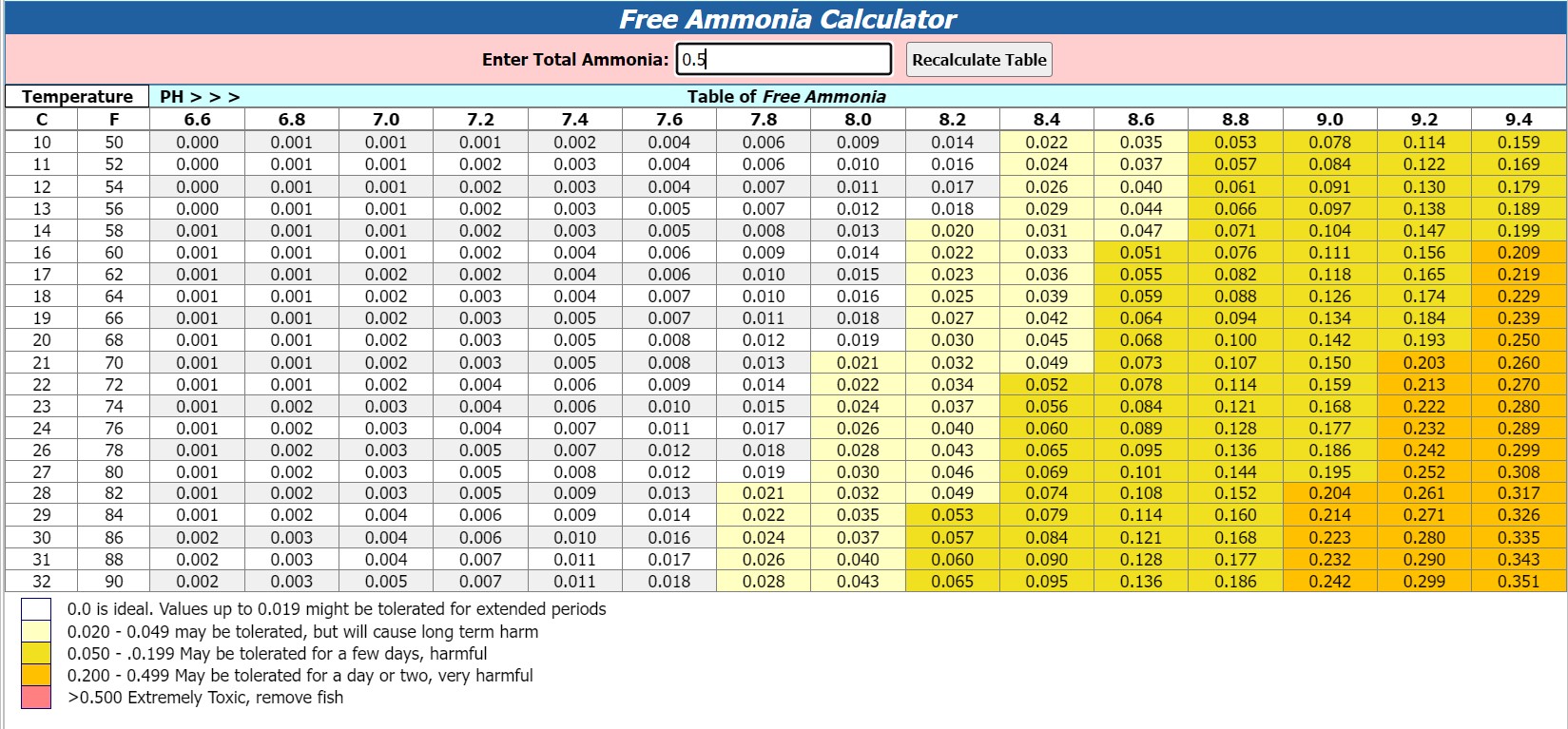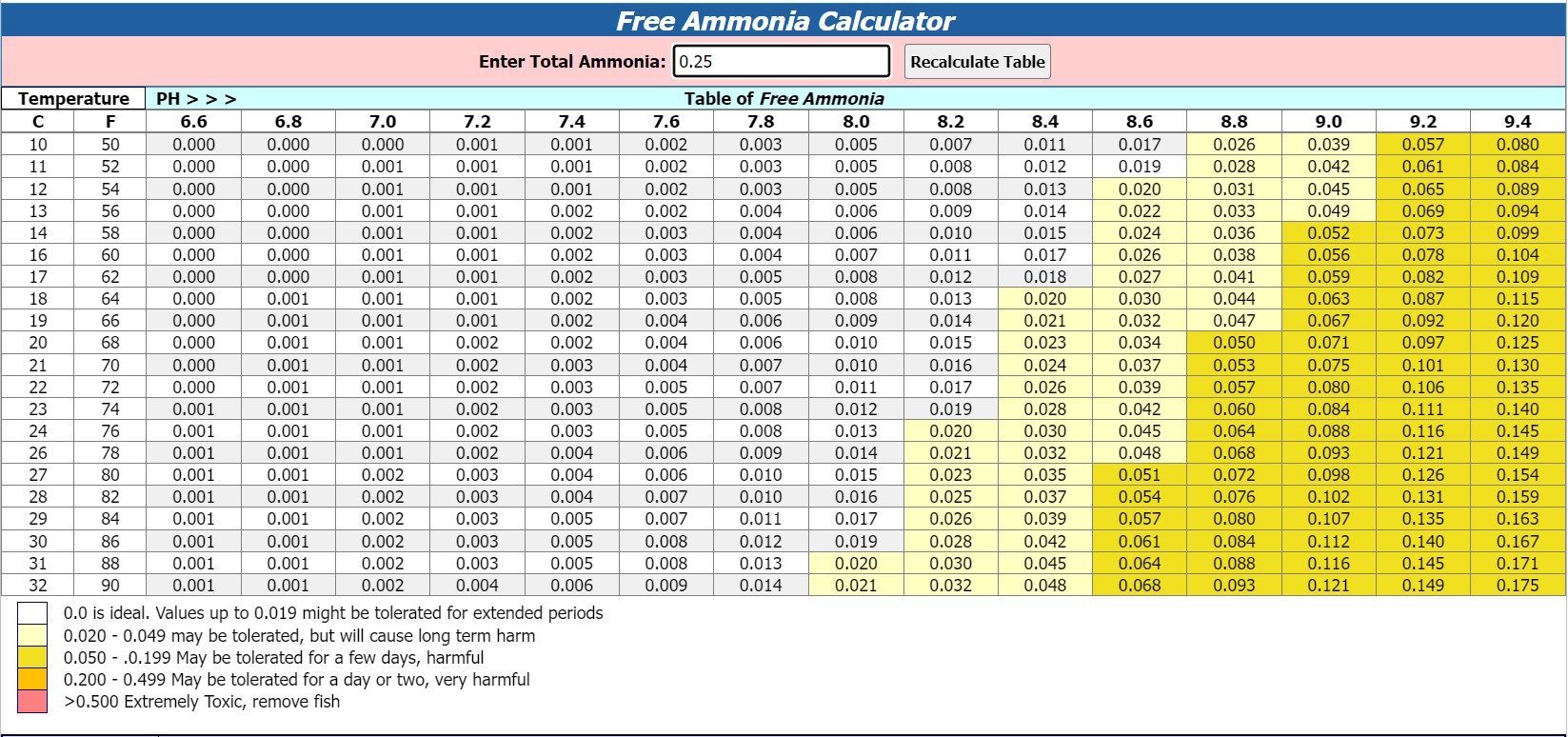Aquarium Fish Information and Advice
Ammonia Aquarium Levels
The Impact of Ammonia in Your Aquarium: Safe Levels, Fish Health, and Solutions
Maintaining a healthy aquarium is a rewarding and enjoyable hobby, but it comes with a great deal of responsibility. One of the most crucial factors in ensuring your fish thrive is water quality. Ammonia, a common byproduct of fish waste and decaying organic matter, can have significant effects on the well-being of your aquatic pets. In this blog post, we will delve into the effects of ammonia in an aquarium, safe levels, its impact on fish, and how beneficial bacteria play a vital role in the nitrogen cycle, along with solutions to reduce ammonia levels.
Understanding Ammonia in Aquariums
Ammonia (NH3) is a colorless, toxic compound that poses a severe threat to the inhabitants of your aquarium. It's produced primarily from fish waste, uneaten food, and decaying plants. High ammonia levels can have detrimental effects on your fish and other aquatic organisms, leading to stress, illness, and even death.
The Effects of Ammonia on Fish
- Toxicity: Ammonia is directly toxic to fish. Even at low concentrations, it can cause gill damage and impair the fish's ability to breathe.
- Stress and Reduced Immunity: Fish exposed to elevated ammonia levels may become stressed, making them more susceptible to diseases and infections. This weakened immunity can lead to outbreaks of diseases like fin rot or ich.
- Altered Behavior: Fish exposed to ammonia may exhibit abnormal behaviors such as gasping at the water's surface, reduced feeding, or hiding.
- Decreased Growth and Reproduction: Prolonged exposure to ammonia can hinder a fish's growth and reproductive capabilities.
Safe Levels of Ammonia
In a well-maintained aquarium, ammonia levels should ideally be at zero. However, ammonia is naturally produced, so achieving this goal is not always possible. It's crucial to monitor your aquarium's water parameters using test kits regularly. Ammonia levels are usually measured in parts per million (ppm). For most fish, levels should be below 0.02 ppm. In freshwater aquariums, levels between 0.25 and 1 ppm can be dangerous, while in saltwater tanks, anything above 0.02 ppm is considered harmful.
The Nitrogen Cycle: Beneficial Bacteria to the Rescue
Understanding the nitrogen cycle is essential to maintaining a healthy aquarium. Beneficial bacteria, particularly Nitrosomonas and Nitrobacter, play a crucial role in this cycle. Here's how it works:
- Ammonia to Nitrite: Nitrosomonas bacteria convert ammonia into nitrite (NO2-). Nitrite is still toxic to fish but less so than ammonia.
- Nitrite to Nitrate: Nitrobacter bacteria then convert nitrite into nitrate (NO3-). Nitrate is relatively less harmful to fish, but high levels can also be detrimental.
- Nitrate Removal: To keep nitrate levels in check, regular water changes are necessary since beneficial bacteria do not effectively remove nitrates.
Resolutions to Reduce Ammonia Levels
- Frequent Water Changes: Regular water changes can dilute ammonia levels in the tank, helping to maintain a safe environment for your fish.
- Proper Filtration: A high-quality aquarium filter can help remove ammonia and nitrite, reducing their concentration in the water.
- Monitor Feeding: Feed your fish in moderation, ensuring that no excess food remains uneaten. Overfeeding can contribute to elevated ammonia levels.
- Establish Beneficial Bacteria: Use products like biofilter media or additives containing nitrifying bacteria to establish and maintain a healthy bacterial colony in your aquarium.
- Quarantine New Additions: Always quarantine new fish before introducing them to the main tank to prevent the spread of diseases that could result from stress due to ammonia exposure.
The Importance of Bacteria within the Nitrate Cycle
In conclusion, understanding the effects of ammonia in an aquarium, maintaining safe ammonia levels, and appreciating the role of beneficial bacteria in the nitrogen cycle is essential for any aquarium enthusiast. These elements form the foundation of a healthy aquatic ecosystem, ensuring the well-being and longevity of your beloved fish and other aquatic creatures. Remember, a well-balanced and carefully managed aquarium can provide a serene and thriving underwater world for both you and your finned friends.



